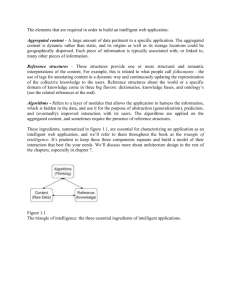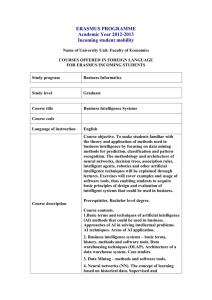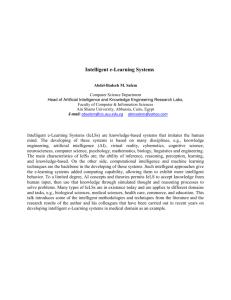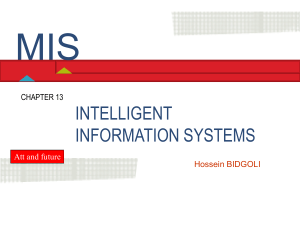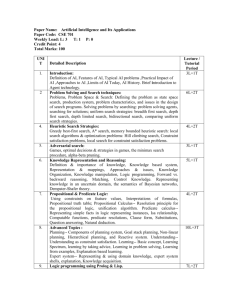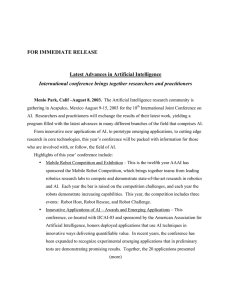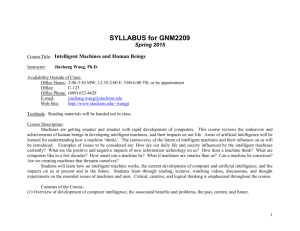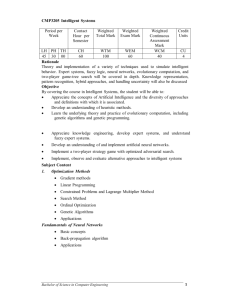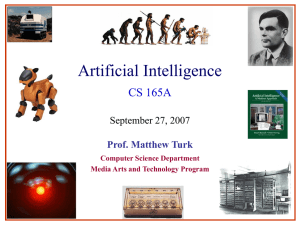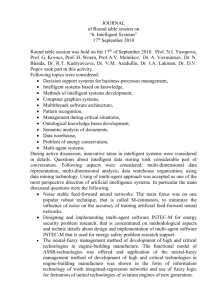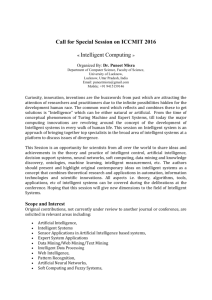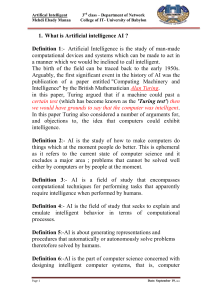COEN 4850
advertisement
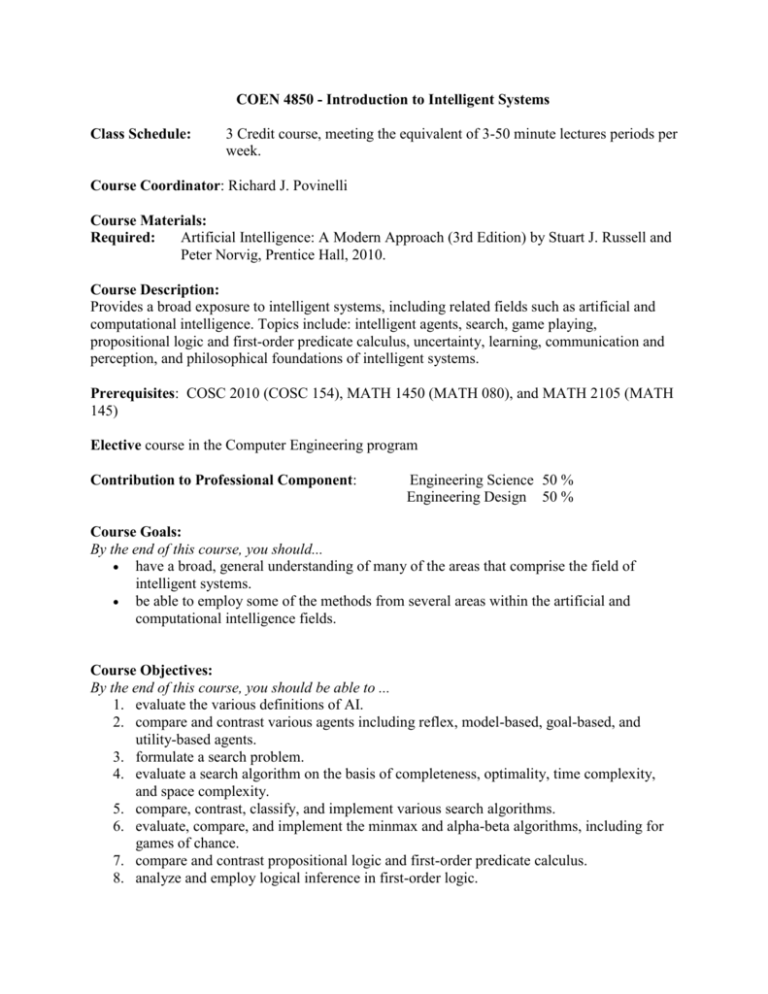
COEN 4850 - Introduction to Intelligent Systems Class Schedule: 3 Credit course, meeting the equivalent of 3-50 minute lectures periods per week. Course Coordinator: Richard J. Povinelli Course Materials: Required: Artificial Intelligence: A Modern Approach (3rd Edition) by Stuart J. Russell and Peter Norvig, Prentice Hall, 2010. Course Description: Provides a broad exposure to intelligent systems, including related fields such as artificial and computational intelligence. Topics include: intelligent agents, search, game playing, propositional logic and first-order predicate calculus, uncertainty, learning, communication and perception, and philosophical foundations of intelligent systems. Prerequisites: COSC 2010 (COSC 154), MATH 1450 (MATH 080), and MATH 2105 (MATH 145) Elective course in the Computer Engineering program Contribution to Professional Component: Engineering Science 50 % Engineering Design 50 % Course Goals: By the end of this course, you should... have a broad, general understanding of many of the areas that comprise the field of intelligent systems. be able to employ some of the methods from several areas within the artificial and computational intelligence fields. Course Objectives: By the end of this course, you should be able to ... 1. evaluate the various definitions of AI. 2. compare and contrast various agents including reflex, model-based, goal-based, and utility-based agents. 3. formulate a search problem. 4. evaluate a search algorithm on the basis of completeness, optimality, time complexity, and space complexity. 5. compare, contrast, classify, and implement various search algorithms. 6. evaluate, compare, and implement the minmax and alpha-beta algorithms, including for games of chance. 7. compare and contrast propositional logic and first-order predicate calculus. 8. analyze and employ logical inference in first-order logic. 9. explain various probability constructs including prior probability, conditional probability, probability axioms, probability distributions, and joint probability distributions. 10. apply and analyze decision trees to learning problems. 11. explain the state-of-the-art in robotics and program robot using the algorithms covered in this course. 12. use state-of-the-art programming and development tools for building AI systems. Contribution to Program Objectives: partial fulfillment of Criterion 3 objectives A, C, E, F, G, I, K Course Topics: Intelligent Agents AI Programming Languages and Tools Searching Tentative Dates Weeks 1, 2 Weeks 3, 4 Weeks 5 - 7 Logic Weeks 8 -10 Uncertainty Weeks 11 -12 Learning Weeks 13 – 14 Robotics Week 15 Last modified: 27 February 2012

